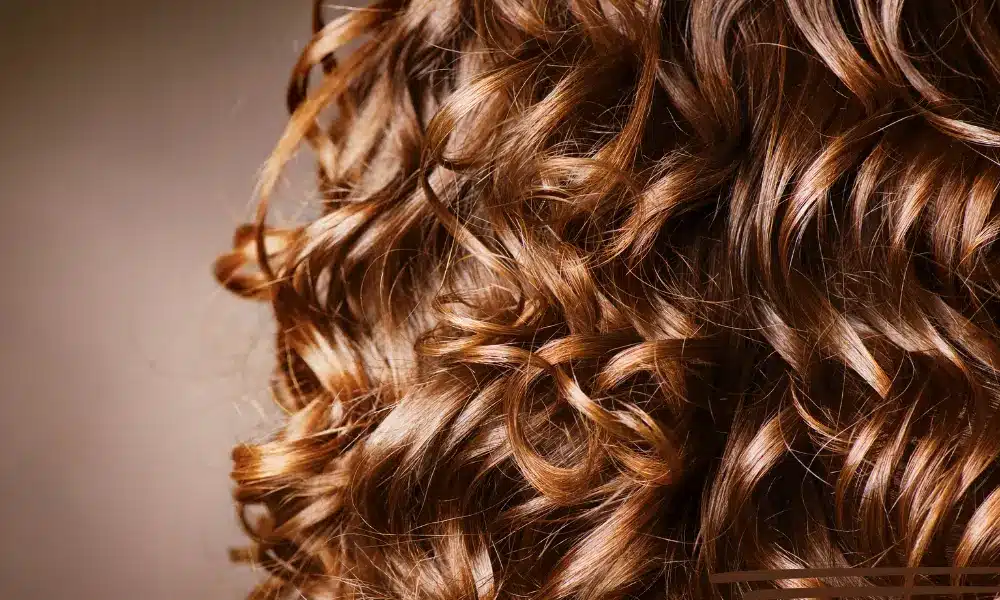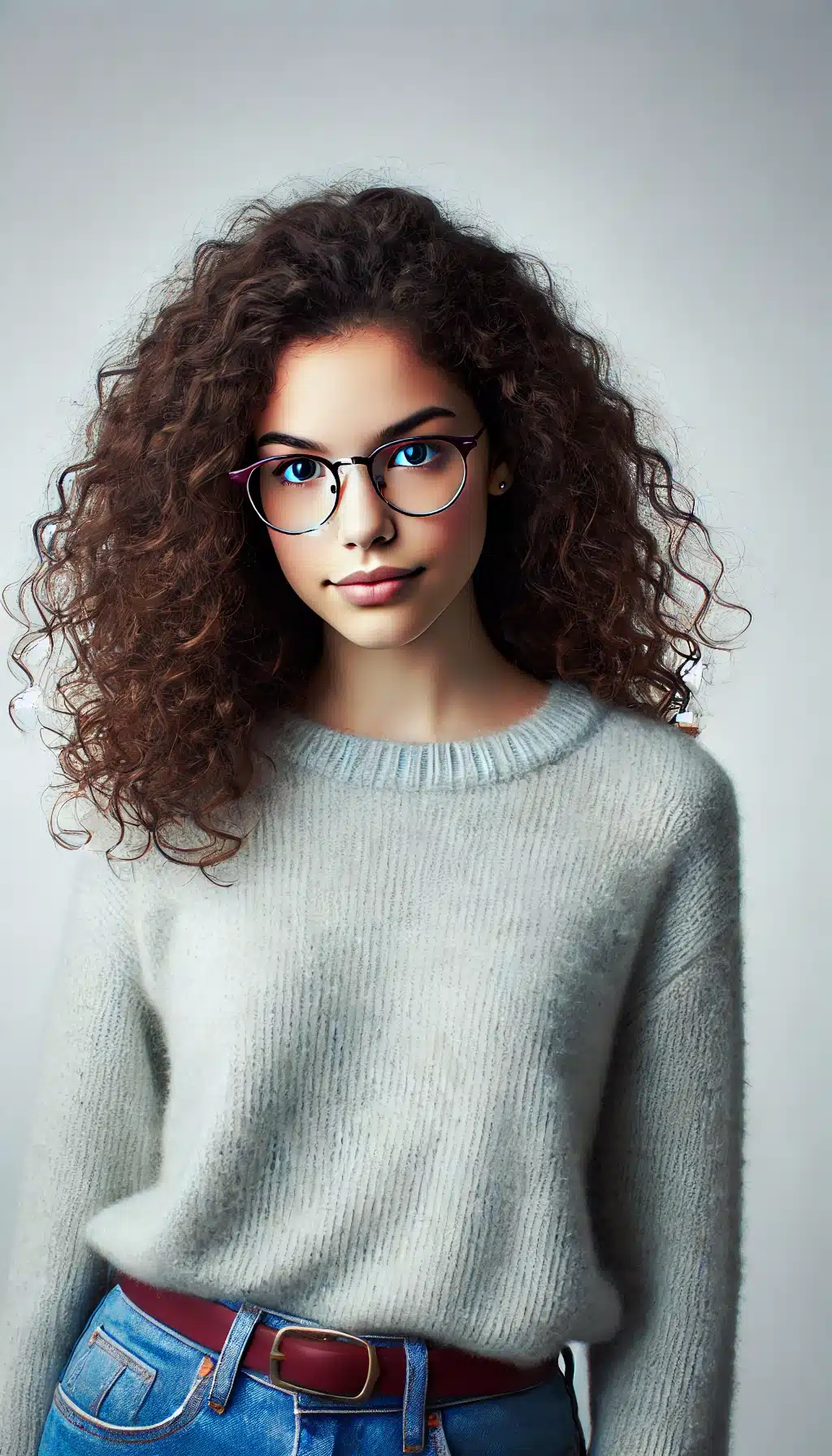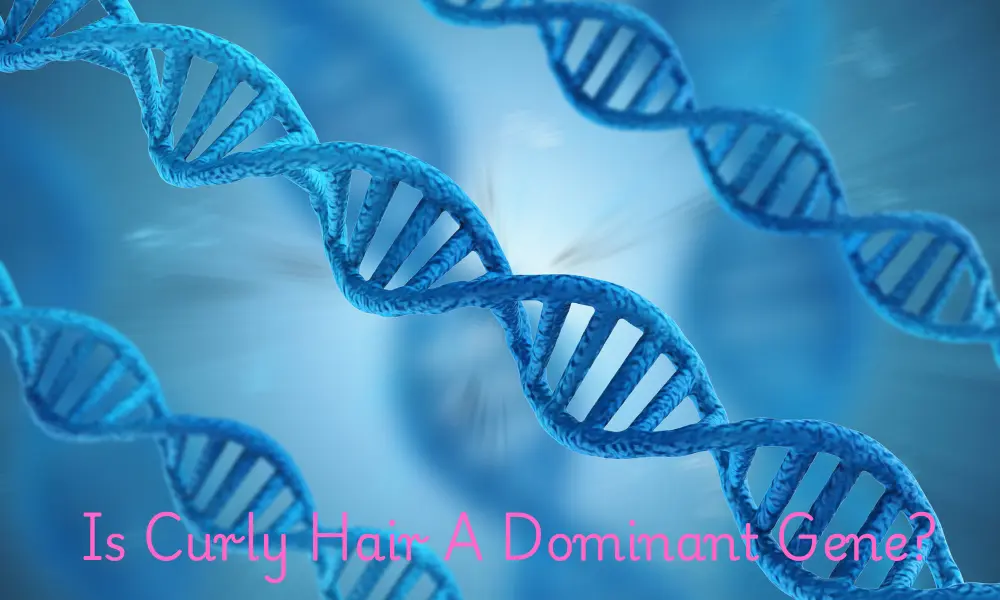The look and texture of your hair are largely determined by the combination of your parent’s DNA, and curly hair is no exception. This genetic information, deeply embedded in your body, sets the formula for how your hair will appear over your lifetime.
While other factors such as nutrition, health conditions, and hormones might influence hair characteristics, they have far less impact compared to the genetic makeup you were born with.
When both parents have curly hair, the chances are high that their children will also sport curls. However, there are intriguing cases where two curly-haired parents might produce a child with straight or wavy hair.
This variance illustrates the complex nature of genetic inheritance and prompts a deeper exploration into how dominant and recessive genes interact in shaping our physical traits.
The possibility of having different variations of any trait (here we are discussing curly hair) is always under the influence of incomplete or co-dominant phenomena. It will determine the exact trait of coming off-spring and every individual has different criteria for it.
Is Curly Hair A Dominant Gene?
Curly hair is typically a dominant trait, meaning one copy of the gene from either parent usually results in curly hair. In contrast, straight hair is recessive and needs two copies to appear. However, other genetic factors can also influence hair type.What Makes Genes Dominant or Recessive?
Every person receives genetic information in the form of alleles from their parents. This information helps determine the type of hair you will have, among other traits. You inherit two alleles from your biological father and two from your biological mother, making up a total of four alleles. These alleles combine to decide traits like hair texture—whether curly or straight.
Typically, a dominant gene like the one for curly hair overpowers a recessive gene. This means if one of your alleles carries the trait for curly hair and another for straight hair, the curly hair trait is more likely to be visible. This is why curly hair is often seen even if only one parent passes down the curly trait.
However, if a child inherits more alleles for straight hair—say, three out of four—the chances of having straight hair increase, despite the dominant nature of curly hair.
For instance, if a father with curly hair carries an allele for straight hair too, and the mother has inherited only straight hair alleles, their children could have a higher possibility of having straight hair. This blend of genetic contributions shows the fascinating ways DNA and inheritance shape our physical features.
What Gene is Responsible for Curly Hair?
The genetics of hair curliness are remarkably complex and multifactorial, with several genes implicated in determining hair texture. Among these, the TCHH (trichohyalin) gene has been prominent and extensively studied with hair curliness.
The protein produced by the TCHH gene plays a critical role in the development of the hair shaft and is localized in the inner root sheath of hair follicles. Variations or differences in this gene have been associated with the difference in hair curliness across various populations.
A 2009 study identified a genetic variant in the TCHH gene that is responsible for about 6% of the variance in curly, wavy, and straight hair. However, the presence or absence of this variant does not guarantee a specific hair type but rather influences the odds.
Other genes, such as EDAR and FGFR2, have also been linked to hair texture, showing the interplay of multiple genes and their variants that determine the final hair phenotype, making the study of hair curliness a truly complex trait.
Is Curly Hair Dominant or Recessive?
From a genetic standpoint, twisty hair tends to be considered a dominant trait. This means that it generally overpowers the recessive traits. Dominant traits often require only a single copy from one biological parent to be expressed in an individual. This simpler mode of inheritance is what leads many to think that if a child inherits one curly hair gene from a parent, they will likely display curly hair.
Conversely, recessive traits like straight hair usually need two copies, one from each biological parent, to be fully expressed. This is why two parents with straight hair will almost always have a child with straight hair unless there is a hidden curly hair trait in their genes that has not been expressed.
While curly hair is generally dominant, there are many other genetic traits involved that can influence the ultimate appearance of someone’s hair. These include other genes that might not strictly follow the simple dominant/recessive game.
How Genetic Influence on Hair Type?
Curly hair’s dominance in genetics is not as straightforward as it might seem. While curly hair is often seen as a dominant trait, the gene responsible for hair texture exhibits what is known as incomplete dominance.
This means that the type of hair you have is the result of how your parent’s DNA combines, influenced heavily by your ancestral histories and ethnicity. Studies have shown that people from different backgrounds have distinct genes that determine their hair type.
Your hair type comes from genes passed down from your parents. These genes are versions of a hair type gene, labeled as curly (C) and straight (s). If you inherit the C allele from both parents, you are likely to have curly hair (CC), but if you inherit one C and one s (Cs), you’ll likely have wavy hair, showcasing the mixed influence of both genes.
It’s also important to understand that hair texture is not linked to sex chromosomes like X or Y; thus, it’s neither X-linked nor Y-linked. The texture of your hair could be affected if you have a genetic health condition with symptoms that impact how your hair appears. In some cases, such genetic health conditions are linked to a mutation within a single gene.
If we look at a practical example, imagine a couple where both parents are curly-headed. Despite both being CC, their children will always have wavy hair if one parent contributes a C gene and the other a s gene, leading to Cs in all offspring.
This example illustrates that while curly hair tends to be dominant, the real-world outcome can vary based on the combination of alleles each parent contributes.

Why Curly Hair is Not So Common Despite Being a Dominant Allele?
It is estimated that less than 20% of the world population have proper curly hair showing that it is not very common despite it is a dominant allele so why this happen?
Even though curly hair is a dominant trait, it is not as common as one might expect. This phenomenon can be likened to other dominant traits that are rare in the population. For instance, the gene that results in dwarfism is dominant, yet it affects only about 1 in 25,000 people.
Similarly, the trait of having 6 fingers is also dominant but remains uncommon because the majority of people have 5 fingers. This illustrates that a dominant gene does not always translate to a high occurrence rate in the population.
The phenotype, or physical appearance like curly hair, does not always reveal the underlying genotype—the actual genetic makeup. For example, a child born to one parent with curly hair and another with straight hair has a 50% chance of exhibiting the curly hair phenotype.
However, this child could still carry the gene for straight hair and, thus, could potentially pass it on to their offspring. As a result, even though curly hair is dominant, its prevalence might not increase significantly because many people with curly hair also carry the recessive straight hair gene and often mate with those who only have the recessive gene, maintaining a balanced likelihood of either trait appearing in their children.
What are the Factors Curly Hair to Go Straight Later in Life?
If someone has curly hair it does not mean at all that it will remain curly throughout his/her life. Various examples are observed where curly hair transforms into a wavy or even straight one. Various etiological factors impact the phenomena and contribute to this change.
Endocrine Changes
Hormones significantly influence the structure of hair follicles at various points in life. For instance, during pregnancy, curly hair may become thicker and heavier, or even less curly. Similarly, postpartum periods might see hair becoming thinner and less curly. Hormone fluctuations during menopause can also change the texture of hair.
Environment Changes
Your hair’s texture can change significantly depending on the environment. Moving from a humid climate to dry, cool mountains can make a noticeable difference. The altitude, humidity, and even the water used to wash your hair all play a role in how your hair behaves daily.
Overall Health
Health conditions can change the texture and look of your hair, either permanently or temporarily. For example, Alopecia may diminish the thickness of your hair, causing it to appear less wavy. Similarly, medications and treatments like chemotherapy significantly alter the feel and appearance of hair.
Conclusion
The texture and appearance of curly hair are largely determined by factors you inherit from your biological mother and father. While there isn’t a single gene that determines how your hair looks, the combination of genetic information you receive plays a crucial role.
Throughout your lifetime, factors such as hormones, nutrition, and the environment can cause your hair fiber to appear more or less curly.
FAQs
Are Curly Hair Dominant or Recessive?
Curly hair is considered a dominant gene trait, meaning it typically manifests even if inherited from just one parent.
Can a Baby Have Curly Hair If Parents Don’t?
Even if neither parent possesses curly hair, genetics can still favor curly hair in offspring due to genes that may skip generations; there’s always a chance a baby could have curls from previous generations.
Is Naturally Curly Hair Rare?
Naturally curly hair is relatively rare, with less than 20% of people having this hair type; the percentage gets even smaller globally.
What Gene Gives You Straight Hair?
Variations in the EDAR gene are responsible for straight hair in people with Asian ancestry, while the TCHH gene influences hair texture in those of European ancestry.

Dive into the world of curls with Farah, a celebrated curly hair expert whose passion and expertise have transformed her into a beacon for those seeking to embrace their natural hair texture. With a vibrant career spanning over a decade, Farah has dedicated herself to the science and art of curly hair, making her an authoritative voice in this niche. Her deep understanding of curly hair’s unique needs and challenges allows her to craft personalized care routines and styles that not only enhance the natural beauty of curls but also promote hair health.

